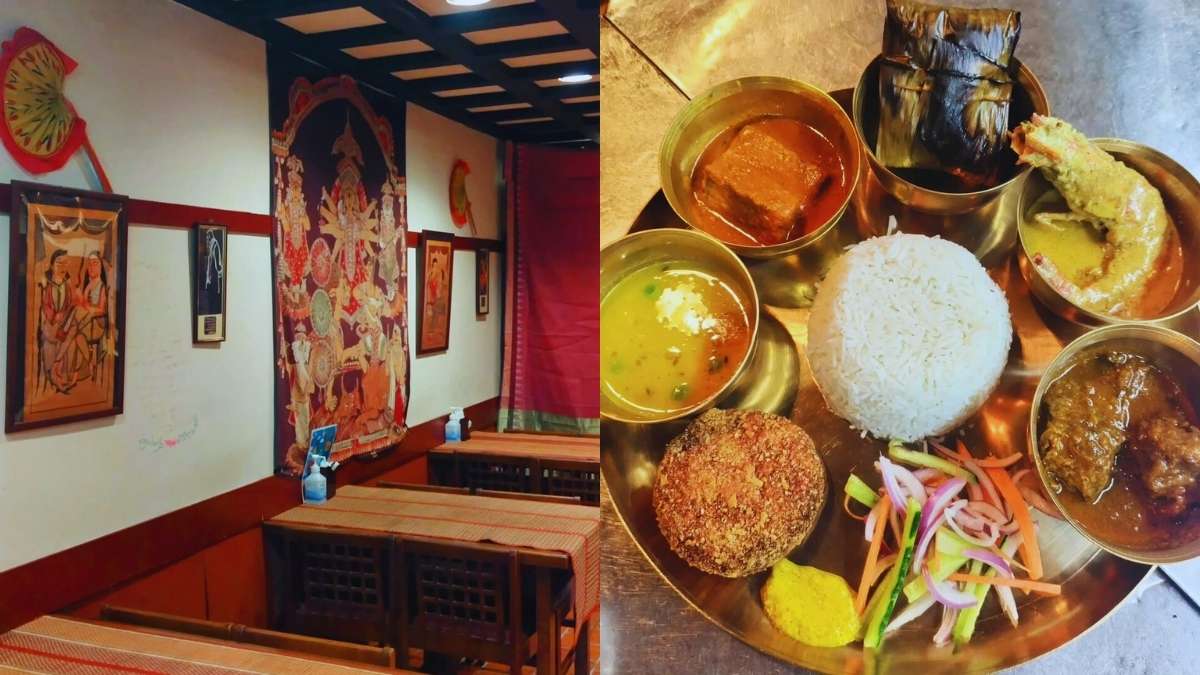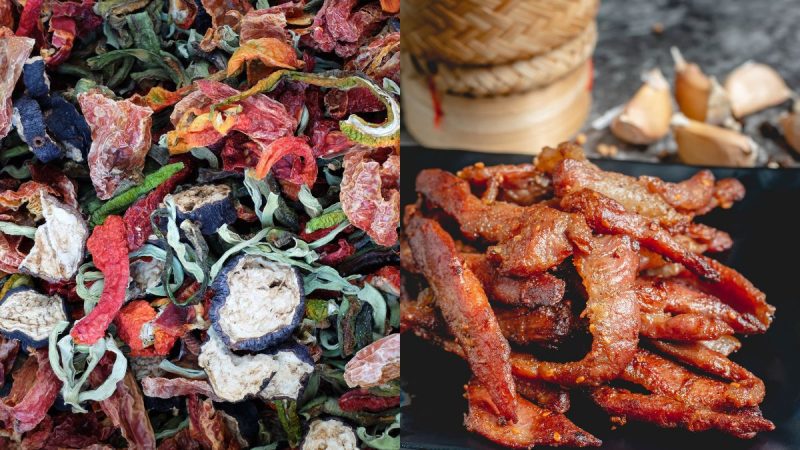Kashmir is renowned for its exquisite cuisine, but it’s also known for its rich history and culture. Every cuisine enthusiast can find something to enjoy here. The Hokh Syun (roughly translated as Dried Foods) from Kashmir are equally delicious. Hokh Syun is the art of sun-drying vegetables that they start preparing as early as the autumn months of May and June. This ancient preservation technique not only serves to extend the shelf life of seasonal produce. But, it also encapsulates the essence of Kashmir’s agrarian lifestyle and its reverence for nature.
Kashmir’s Hokh Syun
Hokh syun.
Because. Summer’s almost up.#justkashmirithings pic.twitter.com/VGHGilrLhz
— Shumail Bashir (@Schumyle) August 30, 2021
Hokh Syun, which translates to sun-dried vegetables in Kashmiri, holds profound cultural significance in the region. The practice dates back centuries, rooted in the wisdom passed down through generations. In Kashmir, people have been eating dried veggies for ages. Due to heavy snowfall, food grains and vegetables were used sparingly and no vehicles could travel through. When they were able, they dried the veggies to guarantee they would always have wholesome food, even if they were isolated from the outside world.
The most frequently preserved vegetables include dried brinjal, also known as Wangan Hachi; dried gourd, or Ale Hachi; dried turnips, or Gogji Aer; and dried tomatoes, or Ruwangan Hachi. You can cook these dried vegetables alone or in conjunction with cheese, daals, eggs, and meat. Sun-dried vegetables, such as tomatoes, eggplants, and pumpkins, transform the drying process, concentrating their natural sugars and flavours. This results in a rich, smoky taste that adds depth to various traditional dishes.
Also Read: Soon, There Will Be A Maharashtra Bhawan In Kashmir, 1st State Bhawan In The Region
How Is The Process?
Despite Availability Of Fresh Vegetables In Market, Kashmir's Hokh Syun Remains High 'In Demand'#kashmir #winter #food #sundried #hokhsyun #srinagar #kashmirifood pic.twitter.com/fCQMwOTgRY
— 𝐀𝐃𝐍𝐀𝐍 𝐌𝐀𝐍𝐙𝐎𝐎𝐑 (@AMWTWEET) January 18, 2023
Kashmiris carefully pick, chop, wash, and sun-dry fresh vegetables on kani-chari (wicker trays) as fall approaches. These dried veggies (and fish) are meticulously preserved to withstand the winter months when fresh produce is in short supply. Selecting the right vegetables is important.
The preservation is a meticulously planned event rather than just a procedure. The vegetables, which are finely chopped and seasoned with local spices such as fennel seeds, are placed on large rooftops or specially prepared drying places. They slowly begin to dry out beneath the clear July sky. As the veggies release their moisture, a magical alchemy takes place: bottle gourds become rich and concentrated, tomatoes take on a sweet and tart flavour, and leafy greens become deeply earthy.
The focus is on robust veggies that can withstand drying without losing their flavour or nutritional content. Selected veggies include a variety of colourful leafy greens, tomatoes, bottle gourds, and turnips. Once fully dehydrated, the sun-dried vegetables are carefully stored in airtight containers, away from moisture and light, to maintain their freshness and flavour for extended periods.
Hokh Syun is more than just a preservation technique; Kashmiris celebrate their heritage, honour the land, and nourish their bodies with flavours that have stood the test of time.
Cover image credits: Canva
First Published: March 18, 2024 4:47 PM




